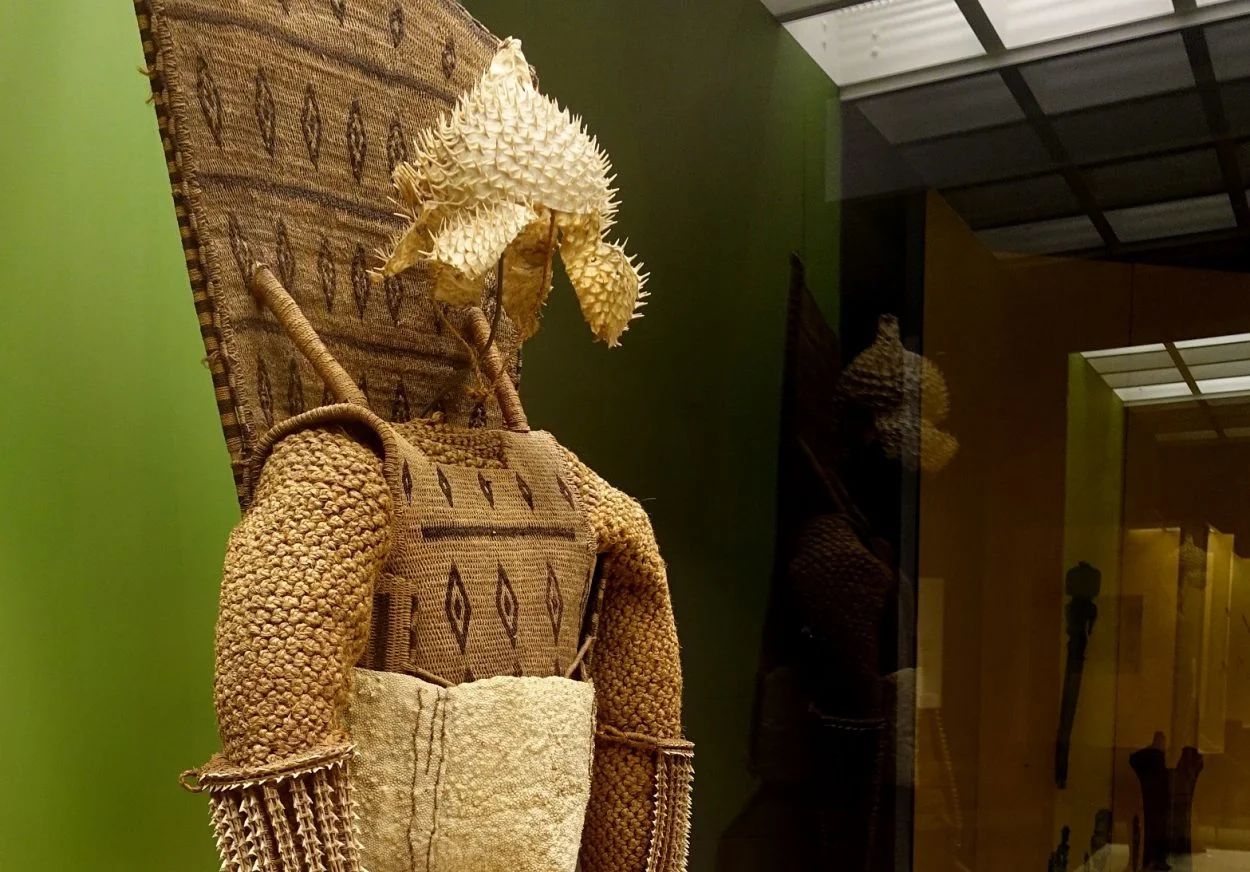Kiribati Armour is a traditional type of armour found in the Independent Republic of Kiribati in the central Pacific Ocean, made from woven coconut fibres and the remains of aquatic animals.
It is thought that the Gilbert Islands within Kiribati were settled sometime between 3000 BC and AD 1300, with the later emergence of the Kiribati culture, a sea-faring people that are renowned for building maneaba (large communal buildings) and swift outrigger sailing canoes.
The Kiribati people utilised the vegetation growing on the islands to provide food and oil, timber for canoes and houses, leaves for making mats, baskets, containers, and crucially, coconut fibre to create string.
The islanders also created complex suits of armour using thickly woven sennit from the coconut fibre string (known as te kora). Both men and women contributed to the creation of armour, with women producing te kora which is the basis of the major components.
The historical provenance of the armour is largely speculated due to no written language, with only elements of surviving oral tradition that has been supressed over the centuries due to colonial expansion by Europeans.

It is suggested that the armour was used for ritualistic one-on-one combat over land and resources, where those involved took turns to inflict wounds on each other according to strict rules. The combatants used weapons that resembled medieval broadswords with a serrated edge made from shark teeth, whilst wearing protective headgear made from dried blowfish.
Anthropologist Katharine Luomala, who worked in Kiribati during the 1940s, noted that “the intent was to wound and not to slay; a slayer was regarded as a murderer and had to pay compensation in land”.
The first Europeans to arrive at the Gilbert Islands was the Spanish and Portuguese during the 16th century AD, but the first encounter with the islanders was when John Byron, commodore of HMS Dolphin arrived in AD 1765.
By the 19th century, the Gilbert Islands were being visited weekly by whaling vessels who noted of the distinctive armour and weapons, with Europeans often trading with the islanders for supplies and ‘curios’ such as shark teeth weapons and the coconut fibre armour.
In AD 1892 the islands were placed under the protectorate of the British Empire, in which the fibre armour was banned due to its association with combat, and were destroyed along with other items of ritual and spiritual significance by Christian missionaries.
Header Image Credit : Daderot – CC0 1.0





